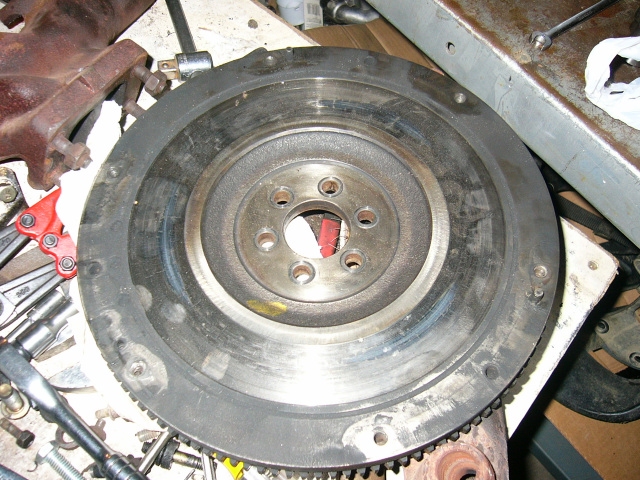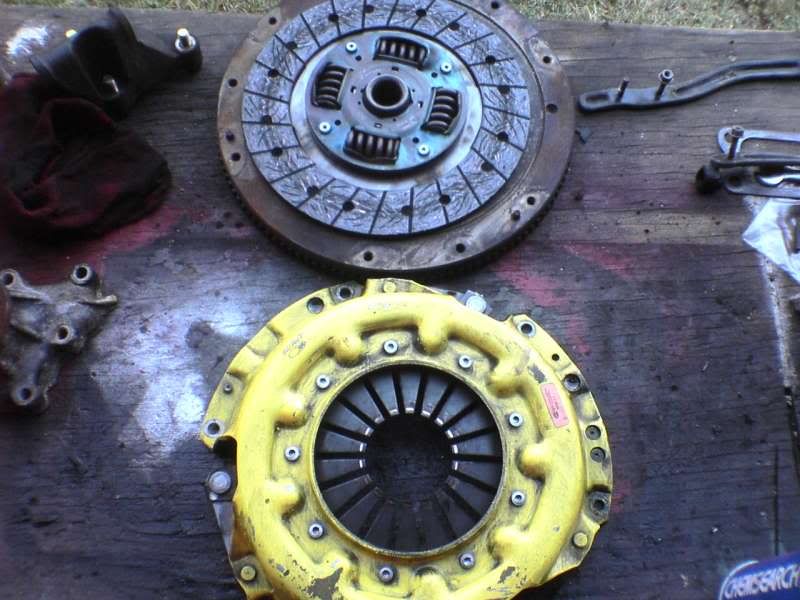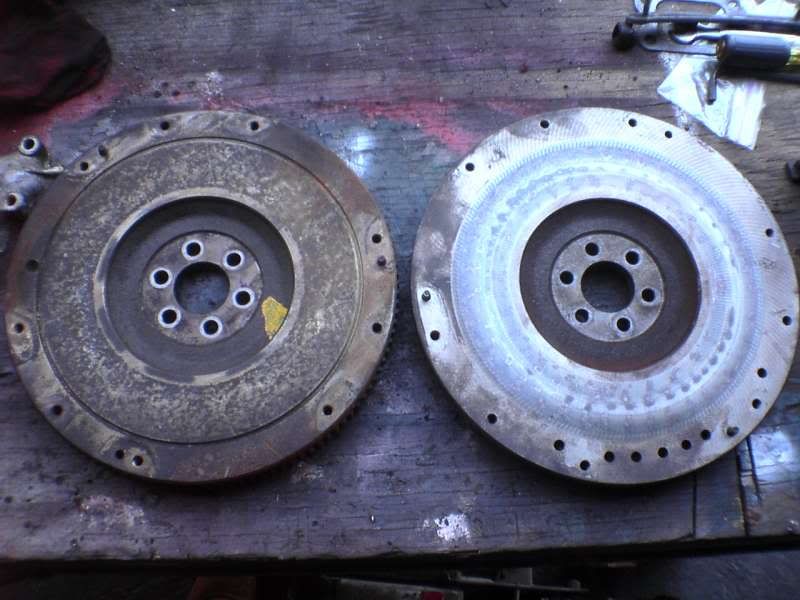Figured I would let you see this for yourselves. This is an ACT 6-puck clutch disc with HD pressure plate that was operated for about 5K miles with a good portion of it being city driving. The wear on both the flywheel surface and the pressure plate was .0025", which was a little less than I had expected.


This is about the same amount of wear you would encounter with 50-80K miles on a stock clutch, so it wears out the flywheel and pressure plate surfaces roughly 10 times faster. Go figure.
This is not necessarily a problem because the disc has a less compressive marcel lining and the ACT pressure plate uses a standard single diaphragm; the wear limit for the pressure plate and flywheel surfaces is higher than with a stock clutch. In addition, as the wear continues towards the end of the "usable life" clamping load from the pressure plate (and torque capacity) actually increase. You can use the 6-puck disc over and over, by this amount of wear it won't reach the end of it's usable life until you've gone through (estimated) at least 3 pressure plates and flywheel resurfacings.
The only irritating part is how much dirtier these clutch disc linings tend to be. You get a buildup similar to brake dust, but much nastier.


The inside of this bellhousing was perfectly clean when I installed the transmission last.

The reason I slipped this clutch was now obviously NOT because it was worn out. The published rated torque calacity is 530lb/ft at the crank. My car put 484tq to the wheels at 20PSI, which is over 550tq at the crank. It only slipped a couple times on race gas with 24PSI with more timing, this being an estimated 580-600tq at the crank. This means the ACT published value is indeed on the conservative side at 530lb/ft, at least 10% below the actual holding capacity.
I would recommend this clutch as a good budget unit for anyone making 390-500rwtq. Anything below that would be better off using the street disc for both smoother engagement and better longevity of the friction surfaces. This was not a bad clutch at all, for the money I paid it performed admirably. I guess in the end the moral of the story is if you go for a 6-puck disc, just be prepared to deal with a little bit of chatter, more transmission noise (from the unsprung hub) and the lower lifespan.



This is about the same amount of wear you would encounter with 50-80K miles on a stock clutch, so it wears out the flywheel and pressure plate surfaces roughly 10 times faster. Go figure.
This is not necessarily a problem because the disc has a less compressive marcel lining and the ACT pressure plate uses a standard single diaphragm; the wear limit for the pressure plate and flywheel surfaces is higher than with a stock clutch. In addition, as the wear continues towards the end of the "usable life" clamping load from the pressure plate (and torque capacity) actually increase. You can use the 6-puck disc over and over, by this amount of wear it won't reach the end of it's usable life until you've gone through (estimated) at least 3 pressure plates and flywheel resurfacings.
The only irritating part is how much dirtier these clutch disc linings tend to be. You get a buildup similar to brake dust, but much nastier.


The inside of this bellhousing was perfectly clean when I installed the transmission last.

The reason I slipped this clutch was now obviously NOT because it was worn out. The published rated torque calacity is 530lb/ft at the crank. My car put 484tq to the wheels at 20PSI, which is over 550tq at the crank. It only slipped a couple times on race gas with 24PSI with more timing, this being an estimated 580-600tq at the crank. This means the ACT published value is indeed on the conservative side at 530lb/ft, at least 10% below the actual holding capacity.
I would recommend this clutch as a good budget unit for anyone making 390-500rwtq. Anything below that would be better off using the street disc for both smoother engagement and better longevity of the friction surfaces. This was not a bad clutch at all, for the money I paid it performed admirably. I guess in the end the moral of the story is if you go for a 6-puck disc, just be prepared to deal with a little bit of chatter, more transmission noise (from the unsprung hub) and the lower lifespan.

 )
)




Comment